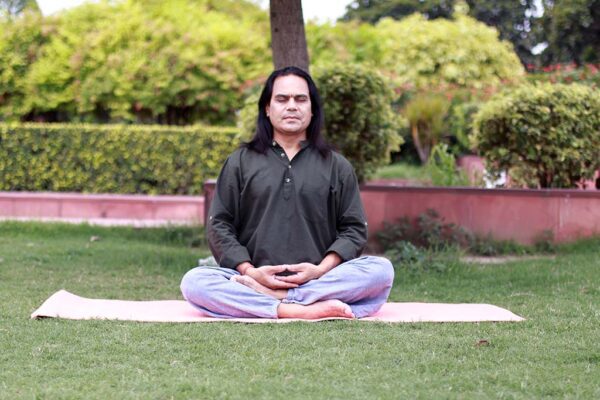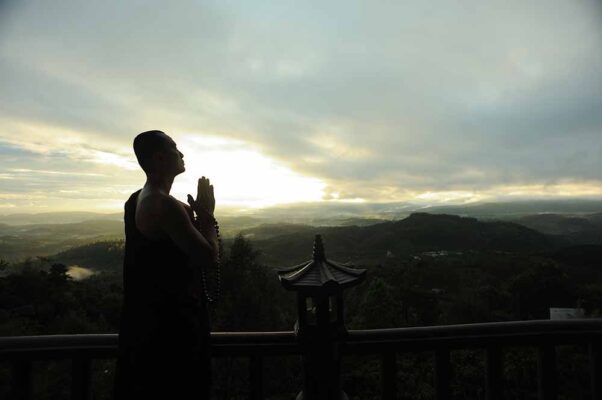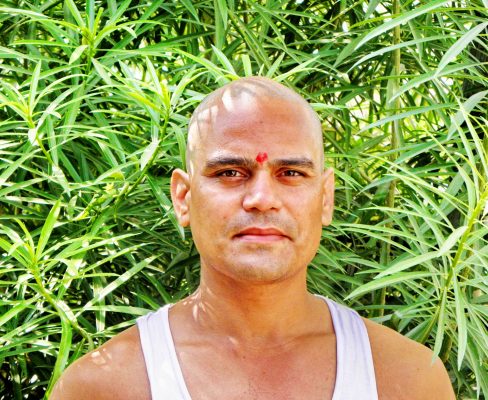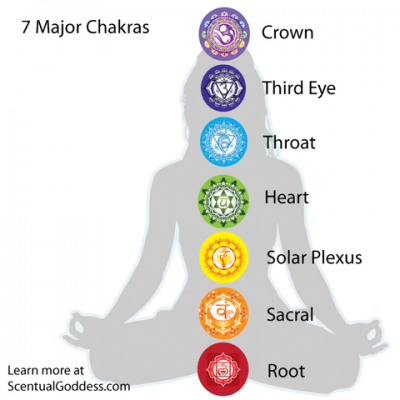
Dear Metta, Friend, Namaste!
The quote of The Absolute Enlightened One, The Buddha is –
“what, now, is Right Concentration? Fixing the mind to a single object (“One-pointedness of mind”): this is concentration.”
Concentration in Sanskrit is called ‘Dharana’, which is the 6th limb or level of Yoga, before 7th i.e, Dhyana (Meditation) and 8th i.e., Samadhi (Trance or Absorption into The State of Consciousness freed from names and forms). The AIM of all kinds of Yoga, viz. Hatha Yoga, Raja Yoga, Ashtanga Yoga, Kundalini Yoga, Laya Yoga, Mantra Yoga, Tantra Yoga, Shakti Pat Yoga, etc., is the same i.e., Samadhi.
There are only 2 Kinds/Planes of Samadhi, First kind/plane is called by Yogis – Sarupa or Savikalpa or Samprajnata or Sabeeja and the Second kind/plane, which is the higest, is called Arupa or Nirvikalpa or Asamprajnata or Nirbeeja Samadhi.
The Great Buddha had penetrated the Utmost, Highest Level of Samadhi, and has described them very minutely to his Disciples. He says there are 8 levels of Samadhi. He has divided the aforesaid First kind/level of Samadhi into 4 parts, and also the above-said second kind/level into 4 parts. He has categorized them mainly into following Groups.
1st Group of Samadhi or Jhana namely Rupa Jhana or Samprajnata Samadhi (Absorption with Forms) has following 4 levels along with factors:
1. First Level of Jhana contains 5 following factors:
-
Vitakka or Vitarka (initial or applied attention)
-
Vichara (sustaining attention)
-
Piti (delight, euphoria, rapture and ecstasy)
-
Sukkh (Joy) &
-
Ekagaata or Ekagrata (One pointedness of mind).
2. Second Level of Jhana contains 3 elements: 1. Piti, 2. Sukkh and 3. Ekagrata
3. Third Level of Jhana contains 2 factors viz. 1. Poorna Santosh (full contentment) and 2. Ekaggata
4. Firth Level of Jhana contains single factor i.e., EKAGGATA.
2nd Group of Samadhi or Jhana namely Arupa Jhana or Asamprajnata Samadhi (Absorption without Forms or Imagelessness) has following 4 levels alonog with factors:
5. Fifth Level is called “The Sphere of Infinite Space.”
6. Sixth Level is called “The Sphere of Infinite Consciousness.”
7. Seventh Level is called “The Sphere of Nothingness.”
8. Sixth Level is called “The Sphere of Neither Perception nor Non-perception.”
What is JHANA?
The Pali word Jhana is best translated as “meditative absorption state.” It is the same as the Sanskrit Dhyana, which derives from Dhayati, meaning to think or meditate. You know what an “absorption state” is — it’s when you get so involved in a TV show or video game or mystery novel that you are surprised when the phone rings and brings you back to reality. The Jhanas are eight altered states of consciousness which can arise during periods of strong concentration. The Jhanas are naturally occurring states of mind, but learning how to enter them at will and how to stay in them takes practice.
To penetrate into even the first level of Samadhi or Jhana needs the establishment of not wrong concentration, but RIGHT CONCENTRATION (SAMMA SAMADHI).
And what is Right Concentration?
Right Concentration, (Samma Samadhi) is explicitly defined in the Mahasatipatthana Sutta (Digha Nikaya #22) and in other suttas (for example, Saccavibhanga Sutta – Majjhima Nikaya #141) as Jhanic meditation: Here a monk (yogi) — secluded from sense desires, secluded from unwholesome states of mind — enters and remains in the First Jhana which is filled with rapture and joy born of seclusion accompanied by initial and sustained attention. With the stilling of initial and sustained attention, by gaining inner tranquillity and oneness of mind, he enters and remains in the Second Jhana which is without initial and sustained attention; born of concentration, and is filled with rapture and joy. With the fading away of rapture, remaining imperturbable, mindful, and clearly aware, he enters and remains in the Third Jhana, and of him the Noble Ones declare, “Equanimous and mindful, he has a pleasurable abiding.” With the the abandoning of pleasure and pain — as with the earlier disappearance of elation and distress — he enters and remains in the Fourth Jhana: which is beyond pleasure and pain; and purified by equanimity and mindfulness. This is called Right Concentration.
Without perfecting the Concentration, one can’t enter into even the first level of Samadhi.
You must have a certain amount of concentration for the first Jhana to arise. This is called Access Concentration. Access concentration has Sila (morality) as a prerequisite. The description of the First Jhana starts “Secluded from sense desires, secluded from unwholesome states of mind…”. If you are not leading a morally upright life, you cannot expect to sit down on a little pillow and find yourself “secluded from sense desires, secluded from unwholesome states of mind.” If there is not sufficient Sila, there is too much to desire, too much to hate or fear, too much to worry about, etc. We can also deduce that access concentration requires that you be in a physical posture that is both comfortable and alert; otherwise, you will be in a painful posture which will lead to aversion or you will be too sleepy to meditate.
Access Concentration can be induced in a number of different ways. There are forty different methods of meditation mentioned in the sutras and thirty of these are suitable for gaining entry to the First Jhana. The First Jhana has 5 factors and the first two are Vittaka and Vichara. These two words often get translated as something like “thinking and pondering.” They do have these meanings in some contexts, but not in the context of the Jhanas. Here they are best translated as “initial and sustained attention to the meditation subject.” You put your attention on the meditation subject and you leave it there until access concentration is established. For example, if you have chosen Anapanasati (mindfulness of breathing) as the meditation method, you put your attention on the breath and you keep your attention on the breath until access concentration is established. How do you know access concentration has been established? It varies for each method. For mindfulness of breathing, the breath becomes very fine, almost undetectable when you have established access concentration.
A detail of all 8 kinds of Jhana:
First Jhana
Once Access Concentration has been established and the first and second factors, vitakka and vicara are in place, you now induce the third factor of the First Jhana. This third factor is called Piti and is variously translated as delight, euphoria, rapture and ecstasy. By shifting your attention from the meditation subject to a pleasant sensation, particularly a pleasant physical sensation, and doing nothing more than not becoming distracted from the pleasant sensation, you will “automatically” enter the First Jhana. The experience is that the pleasant sensation grows in intensity until it explodes into an unmistakable state of ecstasy. This is Piti, which is primarily a physical experience. Physical pleasure this intense is accompanied by emotional pleasure, and this emotional pleasure is Sukkha (joy) which is the fourth factor of the First Jhana. The fifth and last factor of the first Jhana is Ekaggata (one-pointedness of mind). Like Sukha, this factor arises without you doing anything, and as long as you remain totally focused on the physical and emotional pleasure, you will remain in the first Jhana.
Entry into the first Jhana from a physiological perspective proceeds something like this:
- You quiet your mind with the initial and sustained attention to the meditation subject (vitakka and vicara).
- By shifting your attention to a pleasant sensation (piti), you set up a positive reinforcement feedback loop within your quiet mind. For example, one of the most useful pleasant sensations to focus on is a smile. The act of smiling generates endorphins, which make you feel good, which makes you smile more, which generates more endorphins, etc.
- The final and most difficult part of entering the First Jhana is to not do anything but observe the pleasure (sukkha). Any attempt to increase the pleasure, even any thoughts of wanting to increase the pleasure, interrupt the feedback loop and drop you into a less quiet state of mind. But by doing nothing but focusing intently on the pleasure, you are propelled into an unmistakably altered state of consciousness (ekaggata).
Second Jhana
The second Jhana has three factors which are the same as the last three factors of the First Jhana. The initial and sustained attention to the meditation subject are no longer part of the process. You shift from the first to the Second Jhana by shifting your attention from the physical pleasure to the emotional pleasure — from the Piti to the Sukkha. This has the effect of pushing the physical pleasure into the background and also of greatly calming the mind. The First Jhana is a very intense, agitated state, the Second Jhana is much more soothing. The last factor of the Second Jhana is once again one-pointedness of mind, as it is for all the Jhanas.
Third Jhana
The Third Jhana has two factors. You shift from the second to the third by letting go of the physical pleasure and changing the emotional pleasure from joy to contentment, almost like turning down the volume control on your emotional pleasure. The Second Jhana has an upwelling quality to it as the joy seems to flow through you; the Third Jhana is much more of a motionless, quiet contentment. The one-pointedness of mind remains as the other factor.
Fourth Jhana
The transition to the Fourth Jhana from the third takes a bit more effort and bit more letting go than any of the previous transitions. The contentment of the Third Jhana is still a positive state of mind. This contentment is refined into a very equanimous, quiet, stillness. There is no positive or negative feeling in either mind or body. There is just an all pervading, deep peacefulness, with of course, one-pointedness.
The first four Jhanas are called the Fine Material Jhanas. Intense pleasure, joy, contentment and stillness are all states we are familiar with in our normal, everyday lives. But the quality and intensity of these factors as experienced in the Jhanas is more sublime than we normally experience, thus they are called the Fine Material Jhanas. The next four Jhanas are called the Immaterial Jhanas because they are not like anything we normally experience. Each of these Jhanas has two factors — the first factor serves as the name of the Jhana, the second factor is one-pointedness.
Fifth Jhana
The Fifth Jhana is called “The Sphere of Infinite Space.” Please remember that these are just names for experiences the likes of which we are not familiar with. It just feels like infinite space — it doesn’t necessarily mean we are able to experience all the space in the universe. According to the sutras, you enter the Fifth Jhana by “not giving attention to diversity”. This isn’t much detail, but then there is very little “how to” detail about any of the Jhanas. Many people enter the Fifth Jhana by shifting their attention from the primary factor of the previous Jhana to the boundaries of their being. They then start to mentally push these boundaries outward. If you can continue to focus on imagining your boundaries growing ever larger so that you fill the room, the building, the neighborhood, the city, etc., you will eventually experience a sudden shift and find your self in a huge expanse of empty space. The first time entry into “The Base of Infinite Space” is often quite dramatic. You seem to be observing an incredibly large, empty expanse of space. It can feel like walking up to the edge of the Grand Canyon and looking over, but there is no other side and no bottom.
Sixth Jhana
The Sixth Jhana is called “The Sphere of Infinite Consciousness.” It has been mistaken for achieving oneness with all consciousness. It can be entered from the Fifth Jhana by realizing that in order to “gaze” at an infinite spaceousness, you must have an infinite consciousness, and then shifting your attention to that consciousness. This is a fairly subtle shift, but like the transition from each of the Jhanas to the next higher Jhana, there is an increase in concentration.
Seventh Jhana
The Seventh Jhana is called “The Sphere of No-thingness.” It can be entered from the Sixth Jhana by shifting your attention from the infinite consciousness to the content of that consciousness. It is not surprising that the content of infinite consciousness is empty since that infinite consciousness was entered from infinite space which has no perception of diversity. The Seventh Jhana has sometimes been mistaken, not by perceivers but by pundits or outside observers, as being or having the “same meaning” of emptiness as Sunyata.
Eighth Jhana
The Eighth Jhana is called “The Sphere of Neither Perception nor Non-perception”. It is quite difficult to discuss because there is very little to discuss. Perception is a translation of the word Sanna which refers to the categorizing, naming function of the mind. Hence in this state there is very little recognition of what’s happening, yet one is also not totally unaware of what’s happening. It is a very peaceful, restful state and has the ability to recharge a tired mind. It is entered from the Seventh Jhana by letting go of all the outward, infinite expanse and coming to rest in what seems to be a very natural calm quiet place. The mind seems to know a lot more about how to find this space than can be verbalized.
It is said that EVEN SO, ALL EIGHT JHANAS WERE STILL NOT ENOUGH. THE BUDDHA’S “BREAKTHROUGH” TRANSPIRED ONLY AFTER HE HAD “SURPASSED” THE EIGHTH AND FINAL JHANA!! HIS AWAKENING DID NOT OCCUR “IN” THE EIGHTH JHANA BUT “BEYOND” IT. IT IS IN THAT REALM OF “BEYOND” BEYOND THE BEYOND WHEREIN THE JEWEL OF THE ANCIENTS CAN BE REALIZED BY ALL.
_________________________________
Resource: http://www.accesstoinsight.org
















